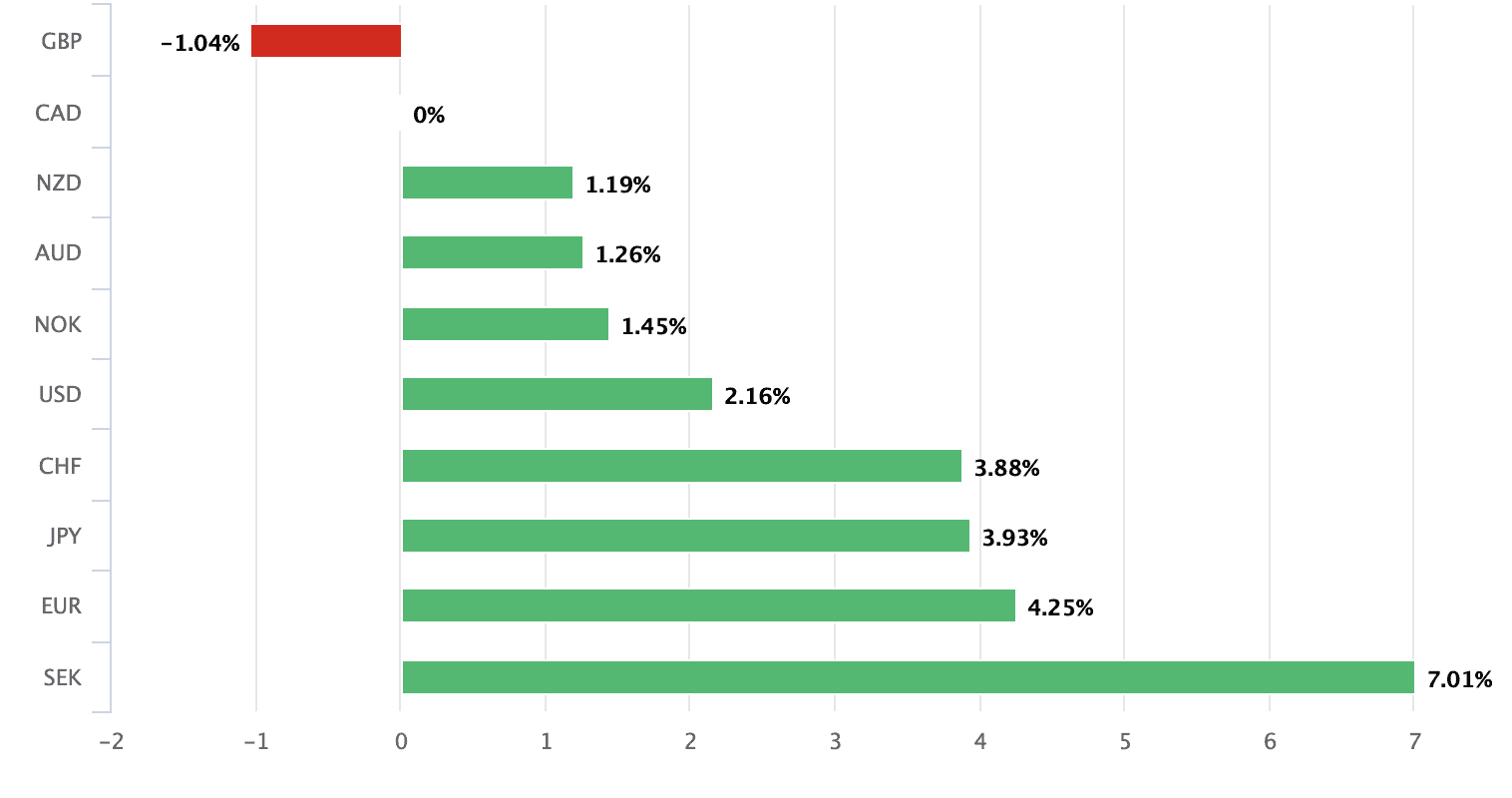Canadian Dollar: Weighed Down as Investor Focus Turns from Oil Prices to Growth

Image © Pavel Ignatov, Adobe Stock
"Oil's uptrend is failing to impress the CAD," says Neil Mellor, Senior Currency Strategist with BNY Mellon, in a briefing to clients of the investment bank that seeks to explain why the currency could be in for a tough time going forward.
It's been a good year for the Canadian Dollar which has enjoyed a 5.25% advance against the Euro and a 2.16% against the Dollar in 2019. It has however fallen against the Pound, but only by a percent, which is not bad considering the UK currency remains the top G10 performer of the year.
Much of the gains were however realised in the opening months of 2019; of late the outperformance has waned somewhat with the currency ceding 1.5% to the USD since its January high.
Given the Canadian Dollar's strong correlation to crude oil prices, the loss of momentum could come as a surprise given the 17% rise in NYMEX crude oil over the same period as the decline against the U.S. Dollar and other major currencies.
"An examination of one-month correlations confirms that the CAD’s typically healthy relationship with oil prices broke down almost entirely early last month: correlations dropped from a near 60% daily average through February to negative correlations in its aftermath," says Mellor, adding:
"Clearly, the market has its eye trained elsewhere."

Above: It's been a strong 2019 for the CAD thus far, but could it's fortunes be about to turn?
The strategist believes market focus has now turned to domestic Canadian growth, and as a result "the odds appear to favour the bears," when it comes to the Canadian Dollar's outlook.
Mellor's studies suggest the apparent catalyst for the breakdown in oil prices and CAD was Canada’s Q4 GDP data, released on March 01: an annualised growth rate of 0.4% fell well short of expectations and constituted the weakest figure since Q2 2016.
Following the data release it is noted the Canadian Dollar suffered a 0.9% daily loss - the fourth largest since the start of 2018 says Mellor.
The data appears to back the Bank of Canada's adoption of a more cautious approach when it comes to raising Canadian interest rates: currencies tend to rise when a central bank is embarking on a rate raising path, and fall when a central bank looks to cease cutting rates or cut rates.
The data certainly favour "the doves" despite January’s GDP suggests Mellor who cites timely lead indicators which point to stagnation: retail sales have fallen for three months in a row, and the current ‘soft patch’ will do little to alleviate downward pressure on the Bank of Canada's three core inflation rates, all of which remain defiantly at the lower end of the bank’s 1-3% target range.
"Given that the BOC is not alone in facing such a backdrop, perhaps the most important consideration of all is that under such circumstances, even a central bank as reticent on currency matters as the BOC will be conspicuously wary of having its guidance translate into a stronger currency," says Mellor.
Time to move your money? Get 3-5% more currency than your bank would offer by using the services of foreign exchange specialists at RationalFX. A specialist broker can deliver you an exchange rate closer to the real market rate, thereby saving you substantial quantities of currency. Find out more here.
* Advertisement










